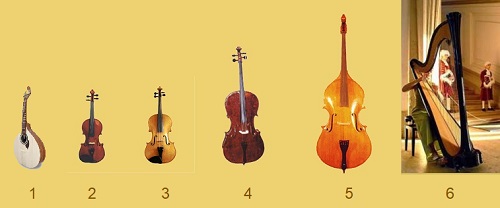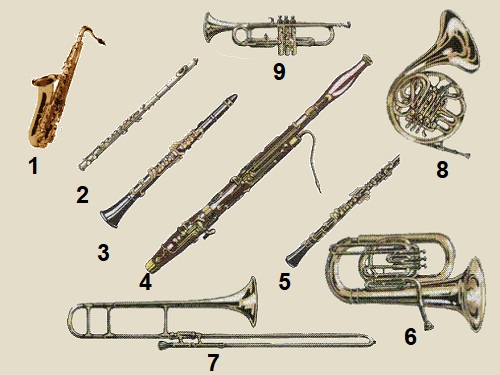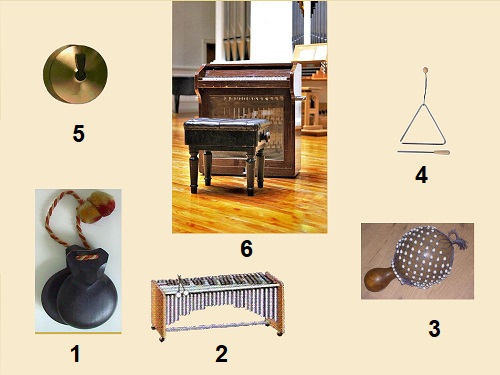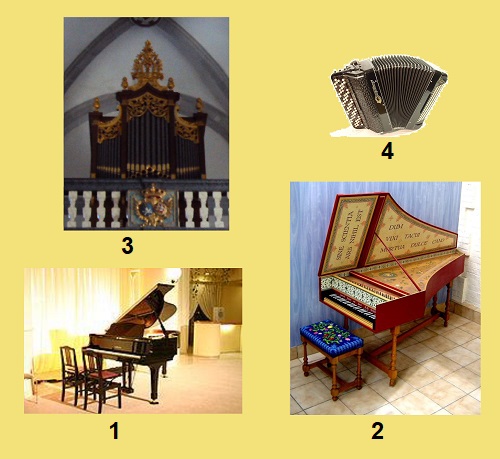| |
Music is a harmonious combination of sounds emitted by instruments called musical instruments.
How are musical instruments classified?
For sound to be produced, there must be air vibration. Musical instruments are classified, therefore, according to their mode of sound production.
- in chordophones (string instruments) sound is produced by a stretched string as in the Portuguese guitar (1), the violin (2), the viola (3), the cello (4), the double bass (5), and the harp (6).

- in aerophones (wind instruments), the sound is produced inside a tube. There are wooden or metal (brass) aerophones like the saxophone (1), the flute (2), the piccolo, the clarinet (3), the bassoon (4), the oboe (5), the bagpipes.
Or just metal (brass) like the tuba (6), the trombone (7), the horn (8), the trumpet (9).

- in membranophones (percussion instruments), the vibration of a membrane is what produces the sound, as in the drum (1), the gong (2), the timbales (3).

- in idiophones (percussion instruments), the vibration comes from the instrument itself, as in the case of castanets (1), the xylophone (2), rattle, bells, the xekere (3), the triangles (4), the cymbals or dishes (5) and the celesta (6).

What about keyboard instruments?
Keyboard instruments come in three of the above classes: the piano (1), the harpsichord (2), the clavichord are cordophones;
the organ (3), the harmonium, the accordion (4), the melodica are aerophones; the celesta is an idiophone.

What are the instruments in an orchestra?
The musical instruments of an orchestra (symphony or philharmonic) belong to four instrument families or sections: strings, woodwinds, brass and percussion.
Each of these families or sections includes a first soloist (who may be supported by a second or a third), whose task, as the name implies, is to play the solo parts of an instrumental score .
keyboard instruments, such as the piano, are not essential pieces of an orchestra, but can accompany it, being played by a soloist.
The piano is also used in vocal accompaniment: choirs, melodies, singing...
And in modern orchestras?
Modern orchestras, such as jazz or rock groups, often include a fifth instrument section, the rhythm instruments. These instruments, two or three in number, are responsible for the rhythm of the musical performance.
What are the professions linked to the musical instruments?
As an orchestra is a set of instruments designed to perform music, each instrument is played by a musician, whose profession is exactly to play that instrument:
. Conductor: directs the musicians (instrumentalists) of the orchestra
. Harpist: person who plays the harp
. Double bass player: person who plays the double bass
. Trombone or trombonista: person who plays the trombone
. Trumpet player: person who plays the trumpet
. Timbalero: person who plays timbales
. Bassoonist: person who plays the bassoon
. Pianist: person who plays the piano
. Violinist: violin player
. Cellist: cello player
. Guitarist: person who plays the guitar
|
|







